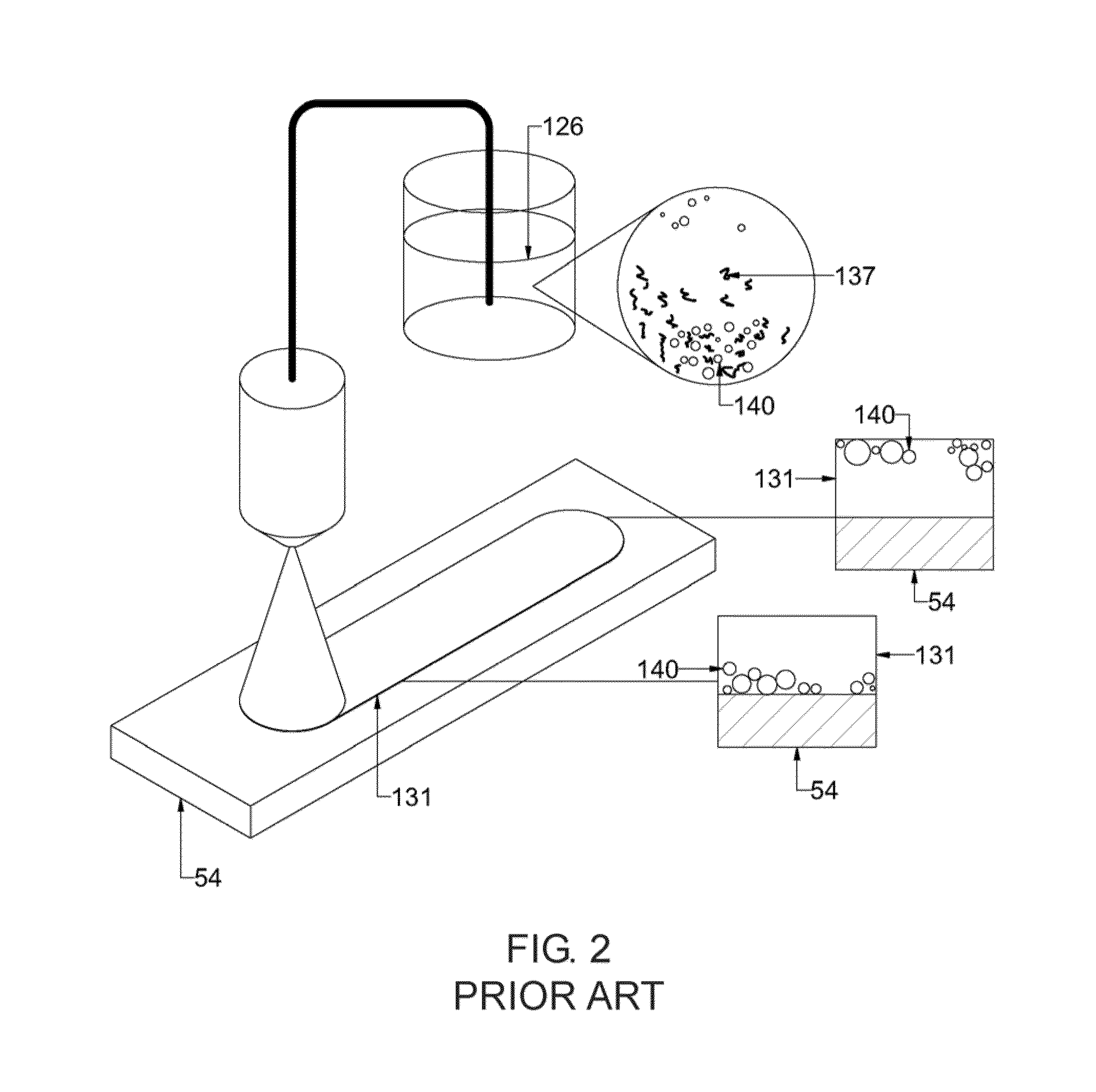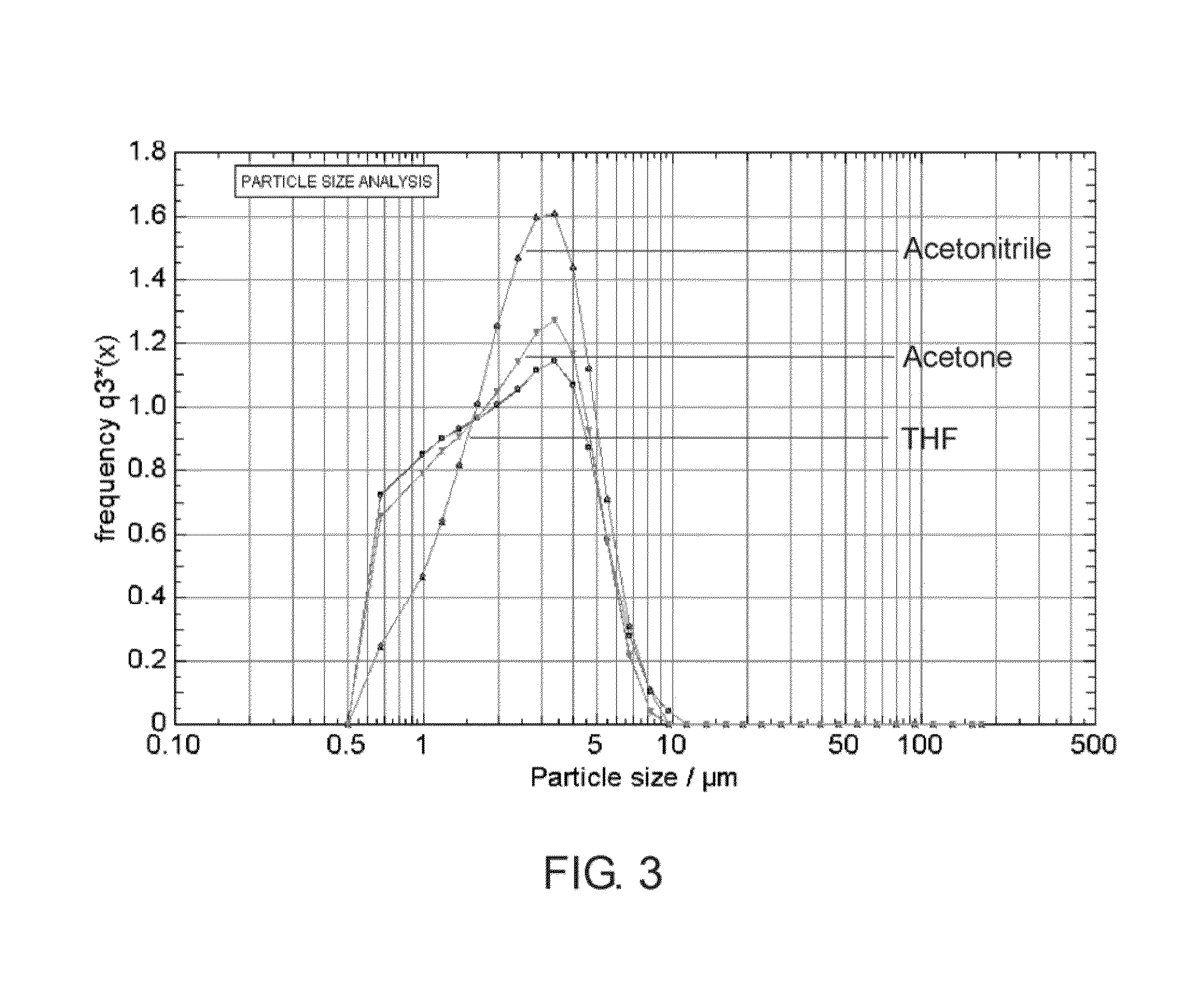Fibrous non-woven polymeric material
a non-woven polymer and fibrous technology, applied in the direction of powder delivery, packaging goods, immobilised enzymes, etc., can solve the problems of insufficient control of material homogeneity and reproducibility, low total yield of the electrospinning process, and complex manufacturing process
- Summary
- Abstract
- Description
- Claims
- Application Information
AI Technical Summary
Benefits of technology
Problems solved by technology
Method used
Image
Examples
example 1
[0074]A polymer composition (composition A) was prepared from two biodegradable polymeric components. 5% by weight of a poly(lactide co glucolide) 50 / 50 copolymer and poly(ethylene glycol) was dissolved in acetone. A fibrous membrane was formed on several stents according to the method of the present invention. The membrane was applied in five passes. It could be seen that a layer with more homogeneous surface features was produced.
[0075]The stents were weighted before and after formation of the membrane and the measurement data were analyzed. As shown in Table 2 the average weight of the produced fibrous membranes was 233 μg and the coefficient of variation 11.8%.
[0076]
TABLE 1Stent #Membrane Weight [μg]12652217325942285200
[0077]
TABLE 2ResultsAverage233.8COV [%]11.8
[0078]The outer surface of the covered stents was inspected under a digital microscope and pictures were taken from a portion of the covered stent at different magnifications as shown in FIGS. 10A-10D. It can be seen that...
example 2
[0079]A fibrous membrane composed of a biostable polymer composition was formed on cardiac stents. The polymer composition (composition B) was comprised of 2.5% by weight of poly(ethylene co vinyl acetate) with 40% Vinyl acetate dissolved in tetrahydrofuran.
[0080]The formation of the fibrous membrane was monitored and controlled using a spray diagnostic apparatus as described in US. Pat. App. No. 60 / 674,005. It was observed that the majority of the generated particles have a string or strand like shape, which were transported to the wire mesh (stent) so that a fibrous membrane was formed covering the openings of the wire mesh. FIG. 8 is a screenshot taken during the fiber deposition step on the stent. The size distribution of the fibers, which was measured prior to deposition, is displayed in FIG. 9. The outer surface of the covered stent was inspected under a digital microscope and pictures were taken from a portion of the stent at different magnifications as show in FIGS. 11A-11B....
example 3
[0081]A fibrous membrane composed of a biostable polymer composition was formed on cardiac stents. The composition (composition C) was composed of 2.5% by weight of poly(urethane) dissolved in tetrahydrofuran.
[0082]After formation of the membrane the covered stents were inspected under a digital microscope. FIG. 12A and FIG. 12B are micrographs of a portion of a stent visualizing the micro porous structure of the fibrous layer. In FIG. 12C a portion of the fibrous layer covered stent is depicted in more detail. The surface is visualized by scanning electron microscopy (SEM) at a magnification of 1500×. Nanofibers are visible. The nano-micro features including a plurality of small pores are clearly visible on the entire surface of the stent. The size of the features was determined using an image analysis technique. FIG. 12D shows a binary image computed from the micrograph of FIG. 12C and a chart showing the size of the surface features. The feature size ranges between 200 nm and 4 m...
PUM
| Property | Measurement | Unit |
|---|---|---|
| Length | aaaaa | aaaaa |
| Length | aaaaa | aaaaa |
| Length | aaaaa | aaaaa |
Abstract
Description
Claims
Application Information
 Login to View More
Login to View More - R&D
- Intellectual Property
- Life Sciences
- Materials
- Tech Scout
- Unparalleled Data Quality
- Higher Quality Content
- 60% Fewer Hallucinations
Browse by: Latest US Patents, China's latest patents, Technical Efficacy Thesaurus, Application Domain, Technology Topic, Popular Technical Reports.
© 2025 PatSnap. All rights reserved.Legal|Privacy policy|Modern Slavery Act Transparency Statement|Sitemap|About US| Contact US: help@patsnap.com



